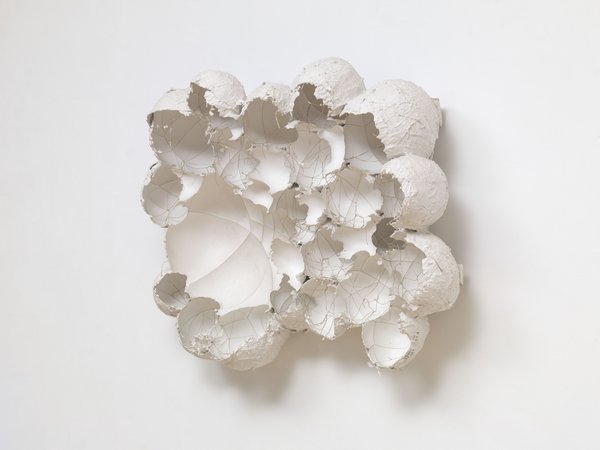Bartuszová worked in relative isolation over three decades in Košice, the second-largest city in Slovakia. Her artistic life was constrained by the limitations of socialist Czechoslovakia, as well as financial concerns and the demands of family life. Even so, she made some 500 sculptures, from small tactile organic forms and reliefs, to commissions for public spaces and ephemeral works in the landscape. Her signature material was white plaster, which lends the perfectly formed sculptures a tentative and fragile quality.
The exhibition starts in the 1960s, when Bartuszová created her own experimental method of casting plaster by hand. Inspired by playing with her young daughter, she found she could create pure abstract forms by pouring plaster into rubber balloons. She would shape the sculpture by pushing or pulling, or submerging it into water, creating uniquely beautiful organic shapes. Some are reminiscent of rain-drops, seeds or eggs. Some suggest the human body, with maternal or erotic associations. In later works she allowed the balloons to burst, creating fragile, ephemeral works akin to cocoons or nests.
In the 1980s, Bartuszová frequently photographed her works outdoors to underline their close affinity to nature. The exhibition will also include a selection of these evocative images alongside her drawings, many of which will be exhibited for the first time.
Exhibition organised by Tate Modern in collaboration with Belvedere 21, Vienna
Tate. 2020. Maria Bartuszová – Exhibition At Tate Modern | Tate. [online] Available at: <https://www.tate.org.uk/whats-on/tate-modern/exhibition/maria-bartuszova> [Accessed 12 November 2020].

Recent Comments